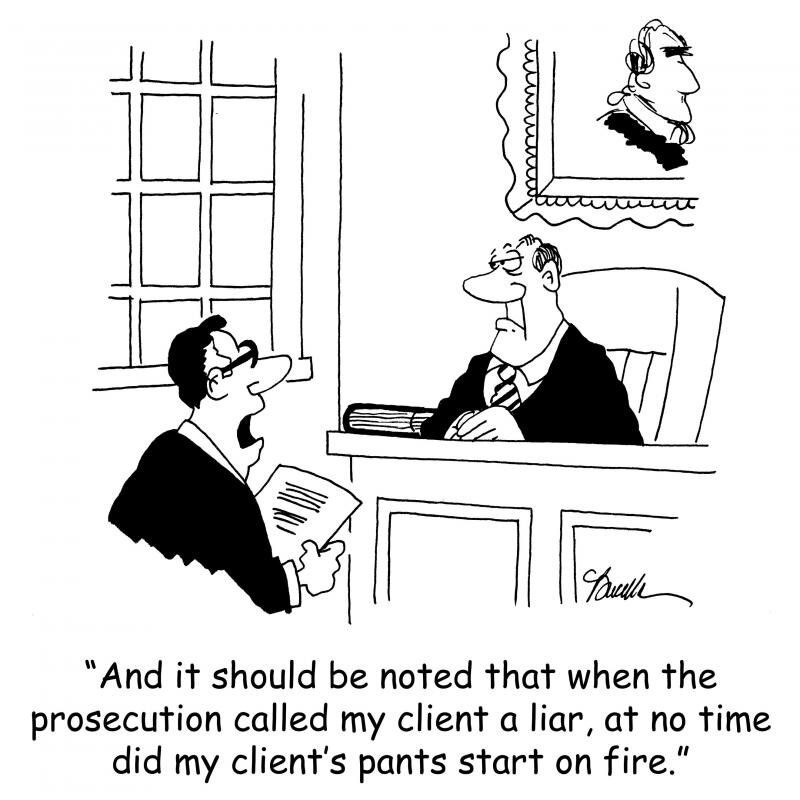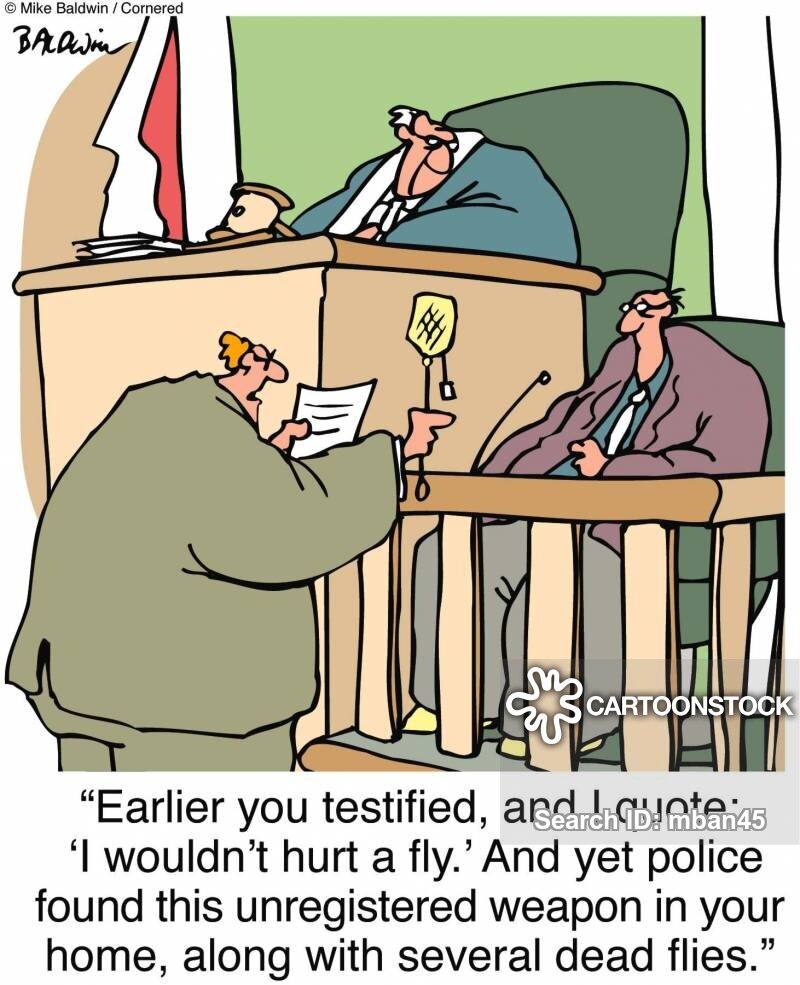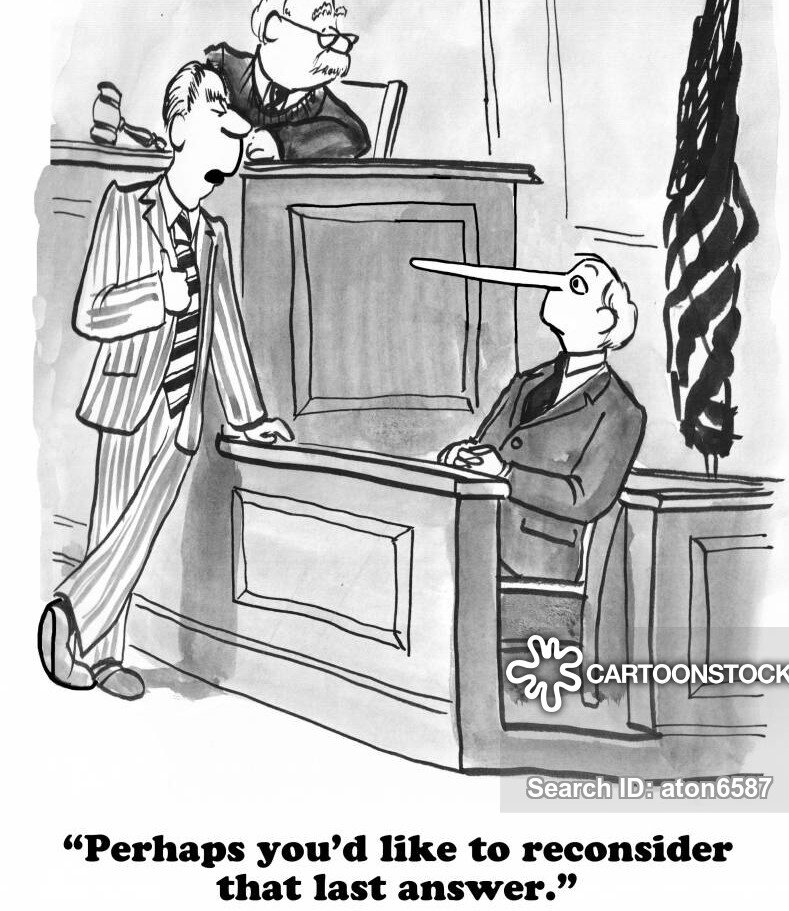Trial Advocacy Pt II
Week 2: Opening statements, introducing evidence, and impeaching the witness.
Lots and lots of impeaching our poor witnesses. Week 2 of TAW is over and it was equal parts amazing and exhausting!
OPENING STATEMENTS
We started the week by tackling the most important part of a trial - opening statements. This is each attorney’s time to SHINE!!! Openers are the first time counsel speaks to the jury, and their only opportunity to “lay it all out” in the way they want the case understood. Traditionally, the prosecution goes first and the defense follows. It’s the prosecutor’s job to describe how solid their case is, and the defense’s job to poke holes in that case/create a counternarrative. For example: did the defendant kidnap her daughter (prosecution’s version) or did she rescue the daughter from an abusive situation? (defense version). Great question…let’s look at the evidence to find out.
Opening statements can be as short as five minutes or as long as an hour (Google says the norm is 10-20 min) and are typically delivered without notes. Studies have shown that most jurors make up their minds about guilt or innocence after opening statements, so they must be well-prepared and well-delivered!
We were taught that an opener has seven parts:
Opening Hook - catch the jurors’ attention ASAP (and then keep it!)
Theory of the Case - short & sweet…in 3-4 sentences/ideas, what happened?
Story of the Case - what is this about? Tell the story in a way that paints your client in a great light.
Problems with the other side’s case - “The [defense/prosecution] will tell you X, but they won’t show you a single photograph or doctor’s report to prove it!”
Acknowledge bad facts & minimize them - “You’ll hear that my client’s fingerprints were on the gun, but you will also hear WHY that is the case”
End strong - One last heartstring pull for the jury
ASK for the verdict you want!! - “I ask that you find X guilty/not guilty.” Simple, but necessary.
The statement should be a story because people like stories. It has to be easy to follow and plant the desired conclusion in the jurors’ minds. You have to make the opener feel like a conversation; not too informal but not too scripted, no big words or legalese but certainly not in a way that talks down to the jurors. Most importantly, you CAN’T waiver about your belief in your version of the events. “I think he’s innocent” or “I’m fairly sure you’ll find him guilty” are no go’s - confidence in your client is essential for the jury to feel the same way.
I thoroughly enjoyed preparing and delivering my opener (shout out to my 1L sectionmate, Nick, for help on the editing portion!) Mine was definitely a bit on the dramatic side, compared to others I heard, and I’ll admit that taking center stage was pretty fun…I just like to use my hands, okay?!?!?!
INTRODUCING EXHIBITS IN EVIDENCE
Dealing with evidence is difficult for two reasons. First, it’s awkward to handle documents while also examining a witness. You lose a bit of witness control in the shuffle, and can seem super unprepared if your documents aren’t ready to go. Second, setting the foundation to introduce evidence is basically pre-choreographed. The judge expects to hear the Magic Words in the correct Order of Operation, and failure to deliver spells disaster.
A little taste of this choreography: first, you have “a document marked Exhibit A for identification.” Next, you show opposing counsel. Then you ask the Judge if you can approach the witness. Once given permission, you approach and show them the document, then ask if they recognize it. If so, what is it? How do they know? Is it an accurate representation of the truth? If these questions are satisfactorily answered, you move to offer the document in evidence; deal with any objections thrown your way; get an “okay” from the Judge; and finally, remember to show the jury. WOOF.
Some of these steps are simply “good form,” but the questions are necessary to “lay the foundation” for whatever evidence you’re offering the court. Before you even THINK about getting something in, you must show the court that it’s (a) authentic and (b) relevant. These aren’t hard bars to meet, but the judge and your opponent will not be pleased if you try to slide in some fake stuff. For example - if you have *a* knife in court, but can’t prove it’s *the* knife used in the crime, then that knife isn’t useful to the jury. It’s just a knife, and it doesn’t come in as “evidence.”
We weren’t automatic pros with introducing things properly, so Tuesday was a messy session. I personally tried and failed to get a bag of cocaine entered in evidence because I couldn’t prove its chain of custody from officer to custodian to officer to chemist to custodian to offer. BOOOOOOOOOO.
IMPEACHING A WITNESS
This is just a fancy way of saying “making the witness look bad,” and it happens ALL the time. Lawyers don’t do it for fun - their goal is always (or should always be) to attack part of the witness’s testimony or their credibility . There are five basic ways to impeach a witness:
Show the witness made a prior, inconsistent statement. If they said A at the scene, but now say B on the stand…which statement is true???
Prove the witness is biased. Oh, you’ve known the defendant for 20 years and hate him? Interesting…
Attack the witness’s character for truthfulness. Isn’t it true that you’ve been convicted of perjury before?
Show deficiencies in the witness’s knowledge or ability to recall. You saw the victim on the ground, but it was dark? No streetlights around? No moon? And the light was on inside your house?
Contradict the witness with testimony from other witnesses/evidence. You said X, but the responding police officer heard you said Y…
My Cousin Vinny shows a classic example of #4, where Vinny established that the witness wore very thick glasses when she “saw” the defendants, then impeached her by standing in the back of the courtroom and holding up two fingers (which she couldn’t see). As soon as she said “four,” mission accomplished - the jurors will now place far less weight (if any!) on her testimony.
Impeachment is fun, but it must be done carefully. First, witnesses are human; they are guaranteed to make mistakes on the stand. Most slip-ups aren’t worth attacking because they don’t matter, and will only waste time. Second, jurors tend to sympathize with the witness when they’re faced with an aggressive lawyer. Impeachment isn’t a time to show dislike, doubt, or disbelief towards the witness; instead, you’re just planting seeds of doubt into the jurors’ minds about that person’s testimony.
We spent three days on impeachment, and I must say - I got better, but still have a long way to go!
OVERALL IMPRESSION
BLUF: I liked Week 2 even more than I liked Week 1. I felt far more comfortable on screen, received a ton of great feedback, and still enjoyed doing the prep and presentations! It’s like a new puzzle every day - what should I ask to make sure I get the info I want? How hard should I hit a point before I know the jurors will ‘get it’ without making them dislike me? How’s my tone, my word choice, my movement? Are they supporting my case or subtly buying into the other side’s argument? Am I going to draw objections with a certain line of questions?
I was also VERY lucky to have two former JAGs as instructors this week. One was career Air Force and retired as a colonel, and the other did four years (last assignment in Boston!) and is now a federal judge. It was surprisingly encouraging to come across two people with similar backgrounds at HLS. There aren’t a ton of JAGs rolling around campus, and to connect with two in the same week (and get their feedback on my performances!!) was awesome.
I’m heading into the last week of this class before spring semester starts up, and it’s THE week of Trial Advocacy. Next Friday, I’ll act as a prosecutor in a (mock) Massachusetts divorce and child custody case. I have a student co-counsel and two opposing students for the defense, and each side is allowed to produce/question two witnesses. We’ll run through an entire trial before a judge and actually receive a verdict, so - send me some good vibes around Friday at 2 EST!!!





